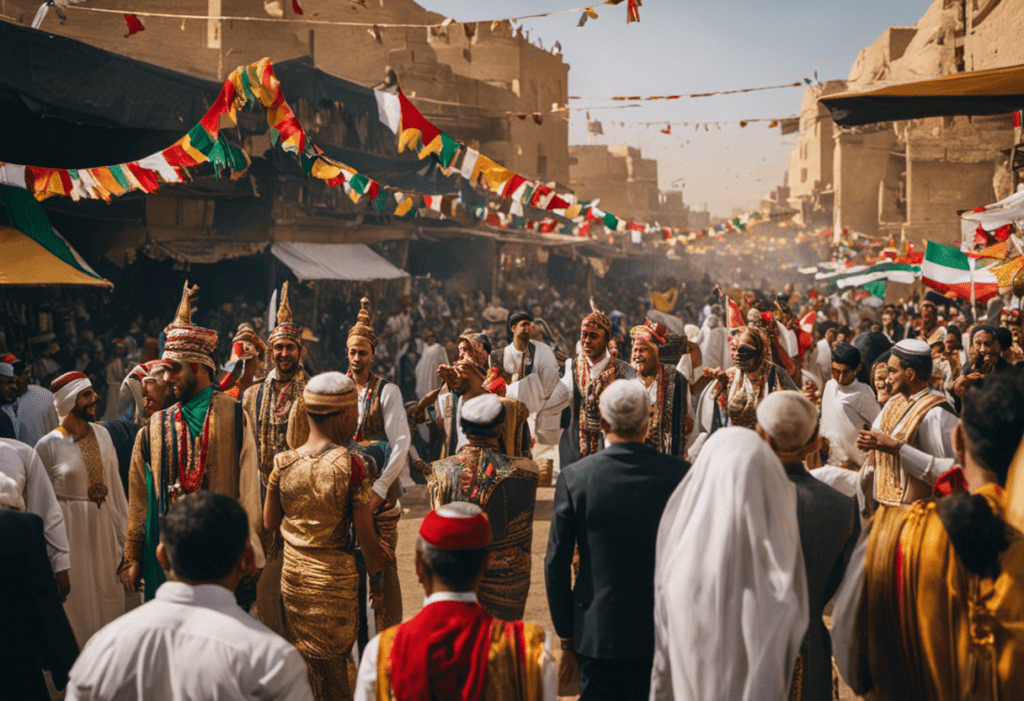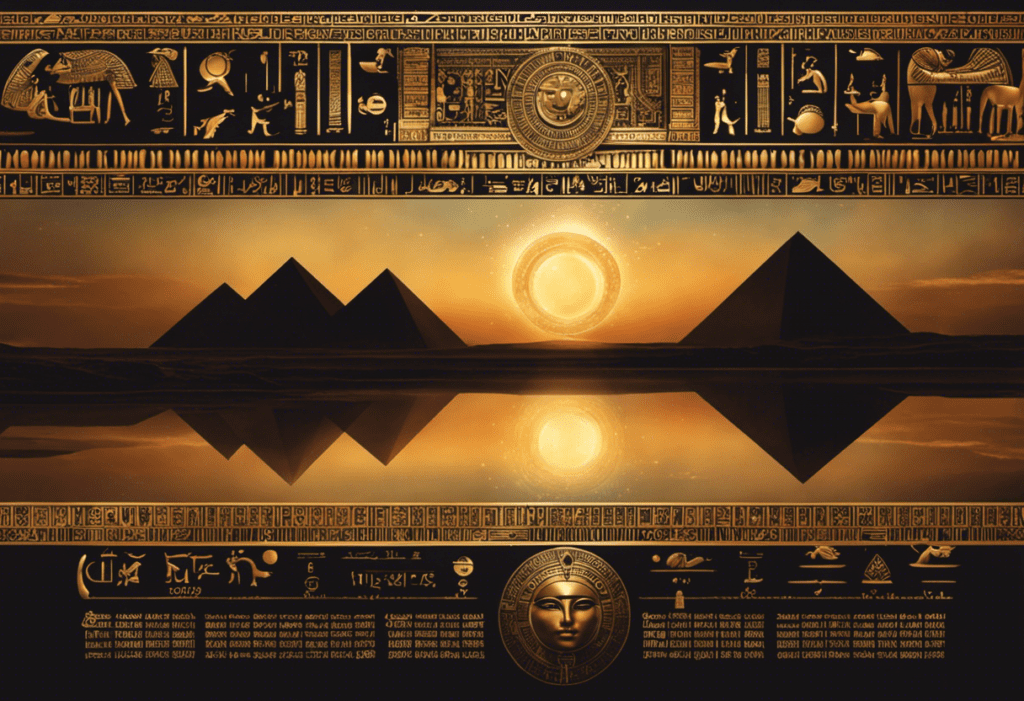In a tapestry woven with cultural richness, the Egyptian calendar reveals a kaleidoscope of celebrations and festivals that have stood the test of time. Each event, meticulously observed, paints a vivid picture of ancient traditions and spiritual devotion.
From the Ancient New Year’s celebration of Wepet Renpet to the mesmerizing lights of the Festival of Abu Simbel, this article delves into the key dates that punctuate the Egyptian calendar, offering a detailed, analytical, and scholarly exploration of these captivating rituals.
Key Takeaways
- Ancient New Year: Celebration of Wepet Renpet
- Festival of the Nile: Pilgrimage to temples dedicated to the god Hapi
- Divine Offerings: Feast of Thoth and Festival of Thoth
- Festival of Opet: Unifying force in ancient Egyptian society
Ancient New Year: Celebration of Wepet Renpet
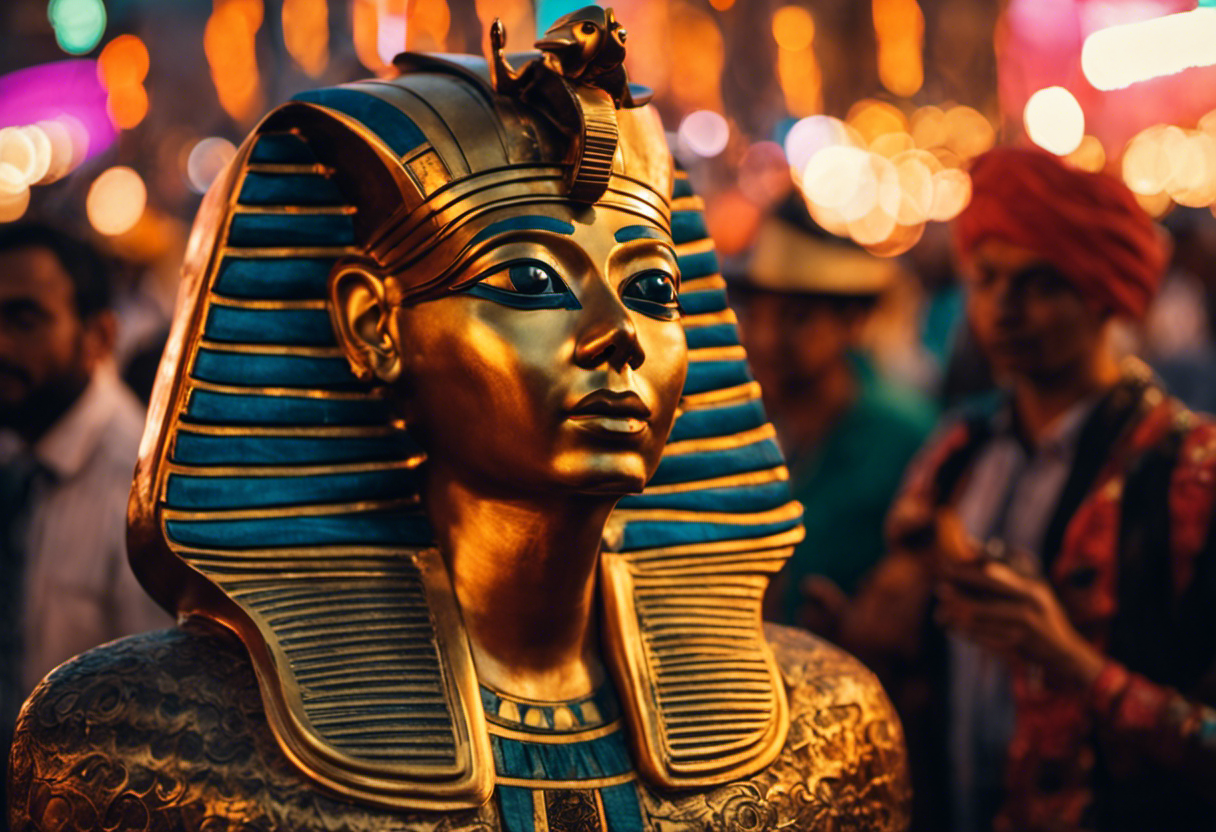

The celebration of Wepet Renpet, also known as the Ancient New Year in the Egyptian calendar, holds great significance in the cultural and religious traditions of ancient Egypt. This annual celebration marked the beginning of the agricultural season and the renewal of life. It was a time for the ancient Egyptians to honor the gods and to express their gratitude for the abundance of the Nile River, which played a vital role in their agricultural practices.
The festivities of Wepet Renpet were characterized by various rituals and ceremonies. The celebrations typically began with the purification of temples and statues of the gods, followed by processions and offerings. The pharaoh, as the intermediary between the gods and the people, played a central role in these rituals, leading the ceremonies and performing sacred rites.
During this time, the ancient Egyptians would also engage in activities such as feasting, music, dancing, and games. It was a time of joy and merriment, as people came together to celebrate the new year and the prospect of a successful agricultural season.
In addition to its cultural significance, Wepet Renpet also had religious implications. The ancient Egyptians believed that the new year marked the rebirth of the gods and the renewal of cosmic order. It was a time when the forces of chaos were defeated, and Ma’at, the goddess of truth and justice, was restored.
Overall, the celebration of Wepet Renpet was a significant event in ancient Egyptian culture. It served as a time of renewal, gratitude, and religious devotion, reflecting the deep connection between the ancient Egyptians and their natural environment.
Spiritual Pilgrimage: Festival of the Nile
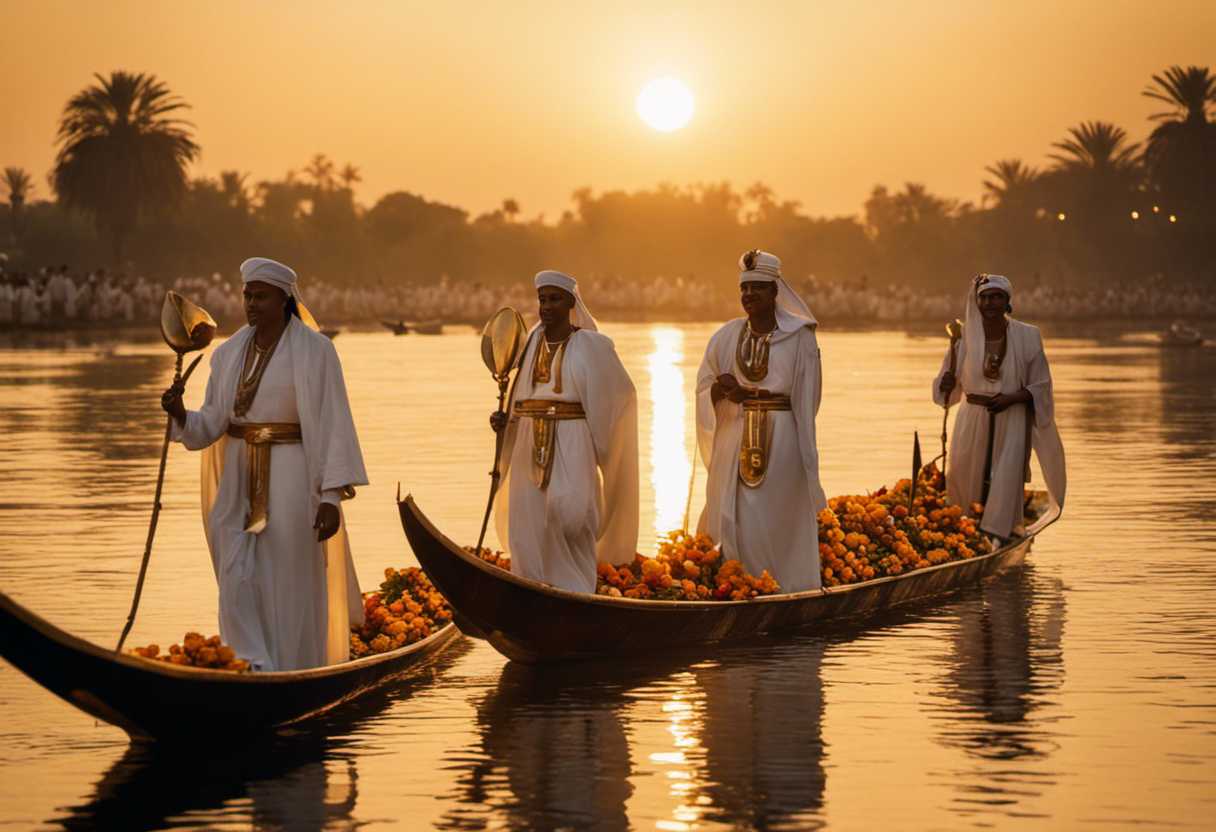

Spiritual Pilgrimage: Festival of the Nile is an important event in Egypt’s cultural calendar. This annual festival, also known as ‘Shemu,’ takes place during the third month of the ancient Egyptian calendar, which corresponds to our modern-day May.
The Festival of the Nile was a time of great significance for the ancient Egyptians as it celebrated the annual flooding of the Nile River, which was a vital event for their agricultural society.
During this festival, Egyptians would embark on a spiritual pilgrimage to the temples dedicated to the god Hapi, who was believed to be responsible for the flooding of the Nile. The pilgrimage would involve offerings, prayers, and rituals to ensure a bountiful harvest for the upcoming year. It was believed that by participating in these ceremonies, the people could gain favor from the gods and ensure the fertility of their lands.
The Festival of the Nile was not only a religious event but also a social gathering. It provided an opportunity for people from different regions to come together and celebrate their shared dependence on the annual flooding of the Nile. Festivities included music, dancing, and feasting, creating a sense of unity and community amongst the participants.
Today, the Festival of the Nile is still celebrated in some parts of Egypt, albeit in a more modernized form. It serves as a reminder of the ancient traditions and cultural heritage of the country, allowing people to connect with their past and appreciate the importance of the Nile River in shaping the history and identity of Egypt.
Divine Offerings: Feast of Thoth
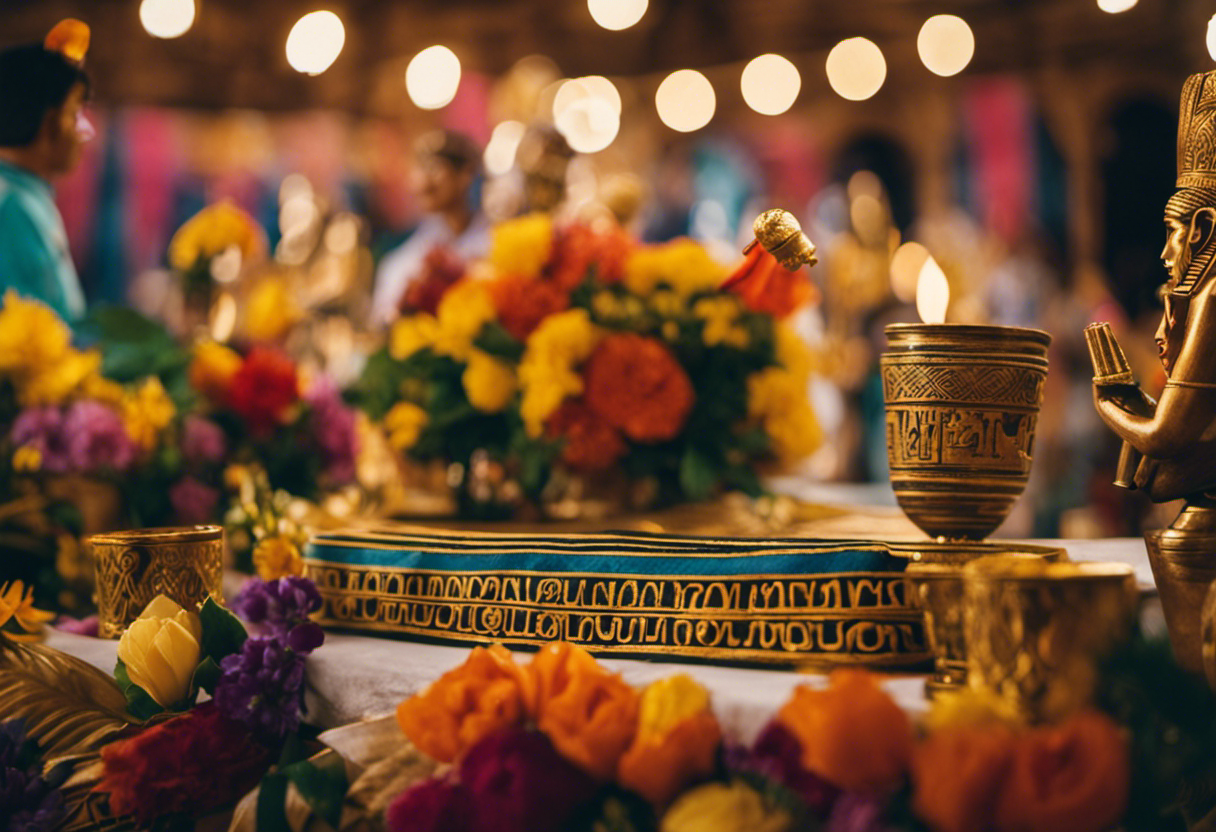

During the Feast of Thoth, devotees honor the god of wisdom through lavish offerings and sacred rituals. Thoth, known as the scribe of the gods and the inventor of writing, was highly revered in ancient Egypt for his role in preserving knowledge and maintaining order in the universe. This festival, celebrated annually on the first day of the Egyptian month of Thoth, was a time for the ancient Egyptians to express their gratitude and seek divine wisdom.
The Feast of Thoth was marked by various rituals and offerings, which were believed to please the god and ensure his continued guidance and protection. Offerings of food, drink, and incense were made at Thoth’s temples, while priests performed sacred ceremonies and recited prayers in his honor. Devotees would also participate in processions, carrying statues of Thoth and chanting hymns praising his wisdom and guidance.
To gain a deeper understanding of the rituals and offerings associated with the Feast of Thoth, let us examine the table below:
| Rituals | Offerings |
|---|---|
| Sacred | Food |
| Ceremonies | Drink |
| Prayers | Incense |
| Processions | Hymns |
These rituals and offerings were believed to create a sacred connection between the ancient Egyptians and Thoth, allowing them to receive his wisdom and guidance in their daily lives. The Feast of Thoth was not only a celebration of the god of wisdom, but also a time for devotees to seek his blessings and enlightenment.
Colorful Unity: Festival of Opet
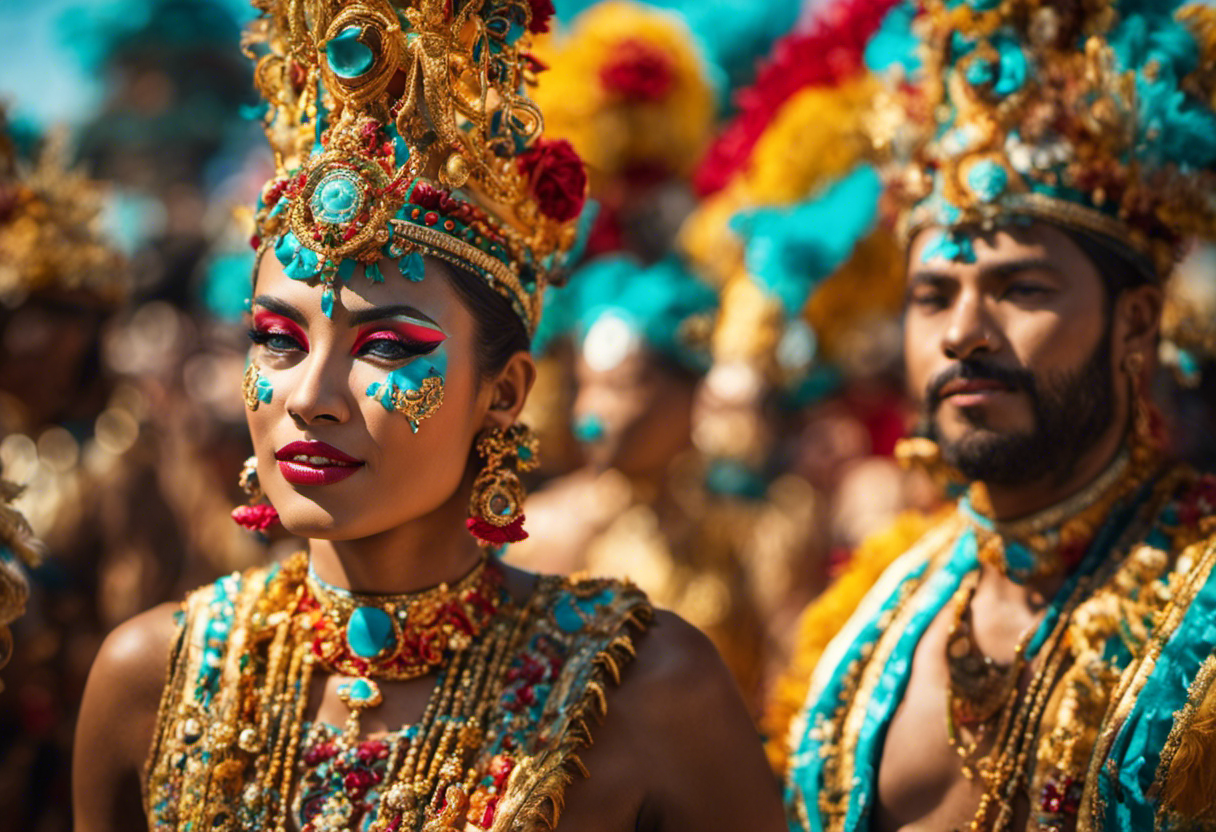

The Festival of Opet was a vibrant and unifying event that brought together the ancient Egyptians to express their devotion and seek divine blessings. This annual celebration took place in the city of Thebes during the New Kingdom period, specifically in the month of Epiphi. The festival lasted for several weeks and was centered around the grand procession of the statues of Amun, Mut, and Khonsu from the Karnak Temple to the Luxor Temple.
The Festival of Opet was not only a religious event but also a significant social and political gathering. It provided an opportunity for the pharaoh and the priesthood to demonstrate their authority and maintain their connection with the divine. The festival also allowed the general population to participate in the religious life of the community and show their devotion to the gods.
During the procession, the statues of the gods were carried on sacred boats and accompanied by musicians, dancers, and priests. The streets were decorated with colorful banners and flowers, creating a festive atmosphere. The people gathered along the procession route, offering prayers and gifts to the gods, as well as seeking their blessings for prosperity and fertility.
The Festival of Opet served as a unifying force in ancient Egyptian society, bringing together people from all walks of life to celebrate their shared religious beliefs. This annual event fostered a sense of community and reinforced the importance of the gods in the lives of the ancient Egyptians.
Harvest Blessings: Sham El-Nessim
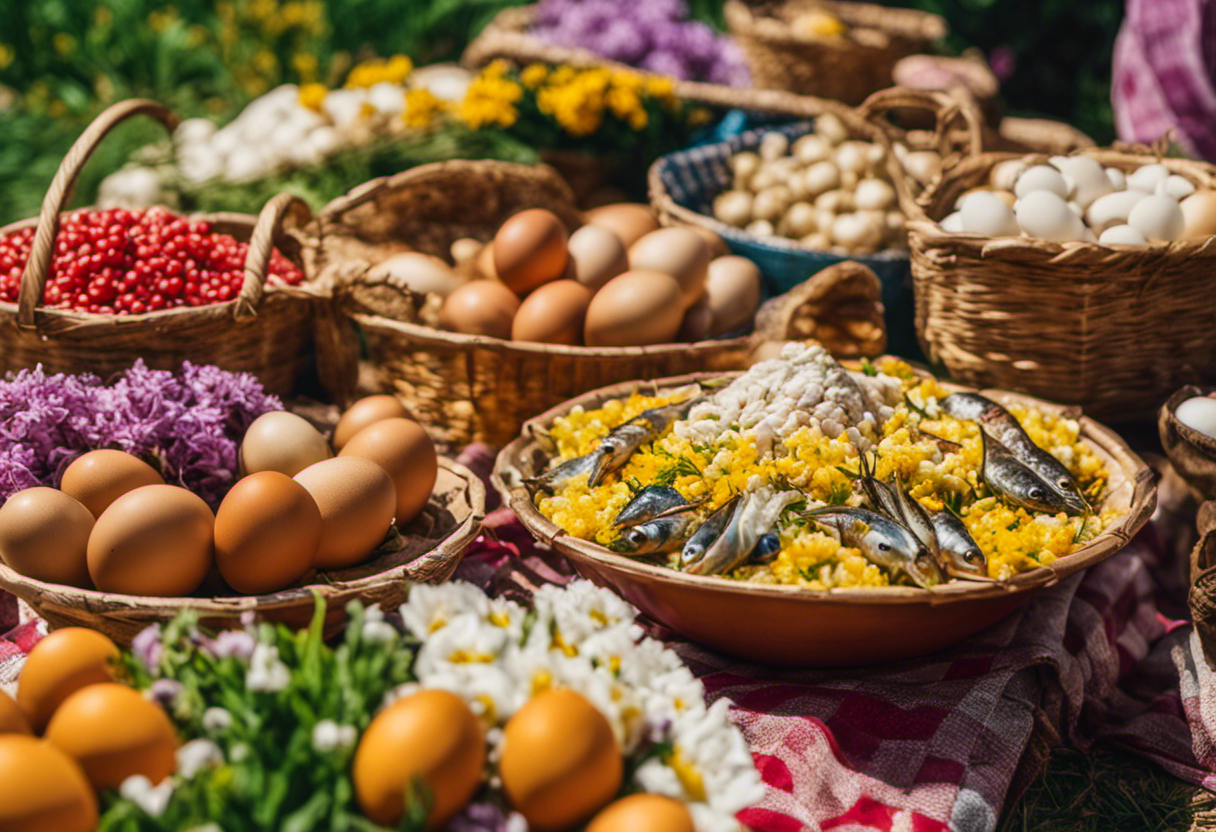

Sham El-Nessim, also known as ‘Smelling the Breeze,’ is an ancient Egyptian festival that celebrates the arrival of spring and the harvest season. This festival dates back to pharaonic times and is deeply rooted in Egyptian culture and traditions.
It is a time when Egyptians gather with their families and loved ones to enjoy a day of picnics, outdoor activities, and feasting on traditional foods, symbolizing the abundance and blessings of the harvest.
Ancient Traditions of Sham El-Nessim
One of the most cherished ancient traditions in Egypt is the celebration of Sham El-Nessim, which dates back thousands of years.
This festival, which falls on the day after Easter Monday, marks the arrival of spring and the beginning of the agricultural season.
Sham El-Nessim, also known as ‘Sniffing the Breeze,’ is a time when Egyptians gather with their families and friends to enjoy outdoor picnics and engage in various cultural activities.
The festival is deeply rooted in ancient Egyptian beliefs, symbolizing the renewal of life and the awakening of nature after the long winter months.
It is a time of joy and rejuvenation, where people indulge in traditional foods like salted fish, onions, and lettuce.
The celebration of Sham El-Nessim showcases the rich cultural heritage of Egypt and serves as a reminder of the country’s deep connection to its agricultural roots.
Symbolism in Harvest Celebrations
Symbolism in harvest traditions is deeply ingrained in cultures around the world, representing abundance, gratitude, and the cycle of life.
The harvest season is a time of celebration and thanksgiving for the bountiful crops that sustain communities.
In many cultures, harvest festivals are marked by various rituals and customs that symbolize the importance of the harvest. For example, the use of cornucopias, which are horn-shaped baskets filled with fruits and vegetables, symbolizes abundance and plenty.
The act of sharing a meal with loved ones during harvest celebrations represents gratitude for the food that has been provided.
Additionally, the reaping and planting of crops during these festivities symbolize the cyclical nature of life and the importance of sustainability.
Overall, the symbolism in harvest traditions serves as a reminder of the interconnectedness between humans and nature, and the importance of respecting and cherishing the resources that sustain us.
Modern-Day Customs and Rituals
Modern-day customs and rituals surrounding harvest celebrations have evolved over time to incorporate a diverse range of cultural traditions and practices. These customs vary from region to region, reflecting the unique cultural heritage of each community.
In some cultures, the harvest celebration is marked by feasts and gatherings where families and friends come together to give thanks for a bountiful harvest. Others may engage in religious ceremonies and rituals to honor the deities associated with agriculture and fertility.
Additionally, many harvest celebrations include traditional dances, music, and storytelling to preserve cultural heritage and pass it down to future generations. Furthermore, the use of specific symbols, such as cornucopias, harvest wreaths, and scarecrows, adds a visual element to these celebrations, symbolizing abundance, fertility, and protection.
Overall, modern-day harvest celebrations are a testament to the resilience and adaptability of human cultures, as they continue to evolve and incorporate new customs while preserving their rich traditions.
Mesmerizing Lights: Festival of Abu Simbel
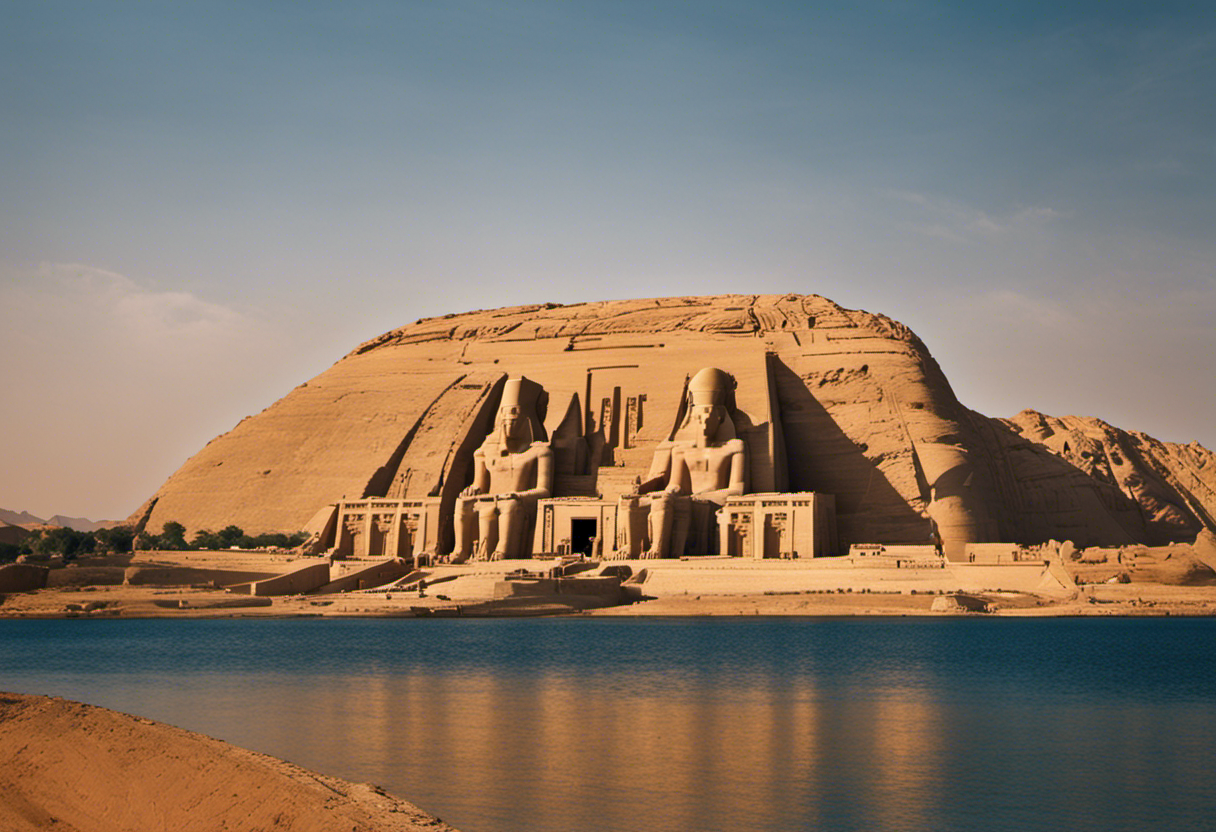

The Festival of Abu Simbel is a highly anticipated event celebrated annually in Egypt.
It is characterized by mesmerizing lights that illuminate the ancient temples of Abu Simbel, creating a truly enchanting atmosphere.
This festival holds great cultural significance as it not only commemorates the relocation of the temples but also highlights the architectural brilliance of ancient Egypt.
Cultural Significance of Lights
In Egyptian culture, the presence of lights during celebrations and festivals holds deep cultural significance. The use of lights is not just for decoration, but it also symbolizes various aspects of the Egyptian belief system and the importance of light in their daily lives.
Here are four key reasons why lights are highly valued in Egyptian celebrations:
-
Symbol of life and rebirth: The Egyptians believed that light represented life and was associated with the sun god Ra. During festivals, the lighting of lamps and torches symbolized the renewal of life and the hope for a prosperous future.
-
Protection against evil spirits: Lights were believed to ward off evil spirits and bring protection to the community. They were used to illuminate the streets and homes, creating a barrier against negative energies and ensuring the well-being of the people.
-
Honoring deities: Lighting lamps and candles was a way of paying homage to the gods and goddesses. It was believed that the divine beings would be attracted by the flickering lights and bless the community with their presence and divine favor.
-
Creating a festive atmosphere: Lights were used to create a joyful and celebratory ambiance during festivals. The vibrant glow of lanterns, candles, and bonfires added to the excitement and merriment of the occasion, enhancing the overall festive spirit.
The cultural significance of lights in Egyptian celebrations cannot be understated. It represents the interconnectedness of life, protection, divine presence, and the joyous nature of these special occasions.
Impact on Local Tourism
The cultural significance of lights during Egyptian festivities has greatly influenced local tourism. The use of lights in Egyptian celebrations, such as the Festival of Lights in Luxor, has attracted tourists from all over the world. These lights not only add a visual spectacle to the events but also hold deep symbolic meaning for the Egyptians. They represent the triumph of light over darkness and are believed to ward off evil spirits.
As a result, tourists are drawn to witness the enchanting displays of lights and experience the vibrant atmosphere of these festivities. The influx of tourists during these events has had a positive impact on local tourism, contributing to the economy and creating employment opportunities for the local population. Additionally, it has led to the development of infrastructure, such as hotels and restaurants, to accommodate the growing number of visitors.
Conclusion
In conclusion, the Egyptian calendar is replete with captivating celebrations and festivals that offer a glimpse into the rich cultural heritage of this ancient civilization.
From the Ancient New Year’s celebration of Wepet Renpet to the mesmerizing lights of the Festival of Abu Simbel, each event holds a unique significance and provides a platform for spiritual connection and communal unity.
These key dates in the Egyptian calendar serve as a testament to the profound influence of religion and the enduring traditions that continue to shape Egyptian society today.

